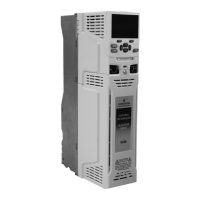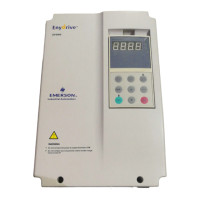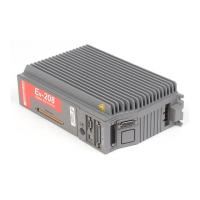Safety
information
Product
information
Mechanical
installation
Electrical
installation
Getting
started
User Menu A Commissioning
Advanced
Parameters
Diagnostics Optimization CT MODBUS RTU Technical Data
E300 Design Guide 229
Issue Number: 1
The encoder can be aligned statically by connecting the motor to a DC power supply as shown.
The motor will move to one of a number of positions defined by the number of motor pole pairs (i.e. 3 positions for a six pole motor, etc.). The encoder
should be adjusted so that the U commutation signal is high, W is low and V is toggling in one of these positions.
Any other feedback device
The alignment required between the no-load motor voltages and the position feedback (i.e. Drive Encoder Position (J53) for the Drive position
feedback interface) with Position Feedback Phase Angle (C13) = 0.0 is shown in the diagram below for a 2 or 4 pole motor. For higher numbers of
poles the zero position should still be aligned as shown, but the one electrical cycle shown corresponds to 360° / (Number of poles / 2). It should be
noted that if the position feedback device is advanced (i.e. the zero position is moved to the right with respect to the voltages) Position Feedback
Phase Angle (C13) is increased from zero. If the position feedback is retarded Position Feedback Phase Angle (C13) changes to 359.9 and then
reduces towards zero.
Vu Vv
Vw
Vuv Vvw
Vwu
Position feedback phase angle alignment with commutation signals
Encoder commutation
signals
U
W
V
32768 5461343691 109230 21845 32768
16384 2730721845 54610 10923 16384
2 pole motor
Position feedback
phase angle
4 pole motor
Position feedback
phase angle
Vu Vv
Vw
Vuv Vvw
Vwu
Position feedback phase angle alignment

